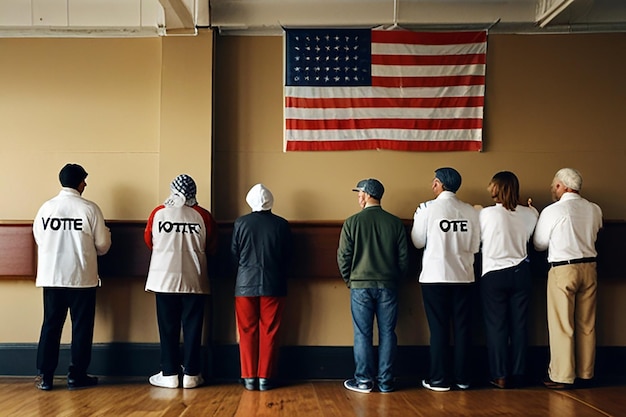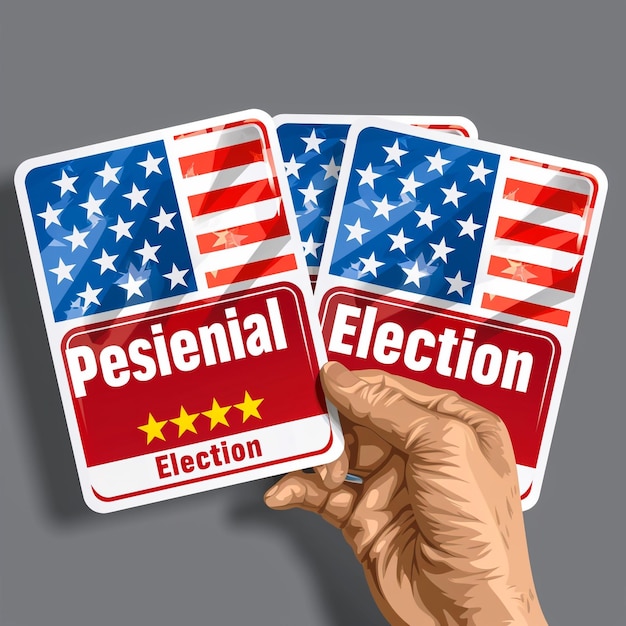2025 Voter ID Laws: Your Comprehensive Guide to Voting Requirements

2025 voter ID laws are regulations requiring voters to show identification at the polls, which can vary significantly by state, influencing voter turnout and potentially impacting certain demographics; therefore, understanding these laws is crucial for participating in the democratic process.
As the 2025 elections approach, understanding the landscape of 2025 voter ID laws: What You Need to Know Before You Head to the Polls becomes increasingly important. These laws, which dictate what form of identification voters must present at the polls, vary significantly from state to state, impacting voter access and potentially influencing election outcomes.
Understanding 2025 Voter ID Laws across the US
Voter ID laws are regulations that require voters to show some form of identification before casting their ballot. These laws are not uniform across the United States; they vary significantly from state to state. Some states have strict photo ID laws, while others accept a wide range of non-photo identification. Understanding these differences is crucial for anyone planning to vote in 2025.
The primary argument in favor of voter ID laws is preventing voter fraud. Proponents argue that requiring identification ensures the integrity of the election process by reducing the risk of impersonation at the polls. They believe that these laws can help maintain public confidence in the electoral system.

Types of Voter ID Laws
Voter ID laws can be broadly categorized into two main types: photo ID laws and non-photo ID laws.
- Photo ID Laws: These laws require voters to present a photo identification, such as a driver’s license, state-issued ID card, passport, or military ID. States with strict photo ID laws typically accept only these forms of identification.
- Non-Photo ID Laws: These laws allow voters to present other forms of identification that do not include a photo, such as a utility bill, bank statement, or voter registration card. These laws are generally less strict than photo ID laws.
- Strict vs. Non-Strict Laws: Some states have strict voter ID laws, meaning that if a voter does not present the required identification, they may not be able to vote or their ballot may not be counted. Non-strict voter ID laws allow voters who do not have the required identification to cast a provisional ballot, which will be counted if they later provide the necessary identification.
Understanding these types of laws is the first step in ensuring that you are prepared to vote in 2025. Each state’s specific requirements can be found on their election websites or through non-partisan voter information resources.
How Voter ID Laws Vary by State
The specifics of voter ID laws can differ dramatically from one state to another. This variation can create confusion and challenges for voters, especially those who move frequently or are voting for the first time. It’s essential to be aware of the specific requirements in your state to ensure that your vote is counted.
States with strict photo ID laws, such as Texas and Georgia, require voters to present a valid photo ID. If a voter does not have an acceptable form of identification, they may be required to cast a provisional ballot and provide identification within a certain timeframe for their vote to be counted.

Examples of State Requirements
- Texas: Requires a photo ID, such as a driver’s license, Texas Election Identification Certificate, personal identification card, concealed handgun license, U.S. military identification card, or U.S. passport.
- Georgia: Requires a valid photo ID issued by the state or federal government. Acceptable forms of ID include a Georgia driver’s license, state ID card, U.S. passport, or military ID.
- Wisconsin: Voters must present an acceptable photo ID, which includes a Wisconsin driver’s license, state ID card, U.S. passport, military ID, or a student ID card from a Wisconsin university or college.
On the other hand, states with non-photo ID laws, such as New Mexico and California, allow voters to present alternative forms of identification. These may include utility bills, bank statements, or voter registration cards. In these states, if a voter does not have an acceptable form of identification, they may be able to sign an affidavit attesting to their identity.
The Impact of Voter ID Laws on Elections
Voter ID laws have a significant impact on voter turnout and election outcomes. Studies have shown that strict voter ID laws can reduce voter turnout, particularly among certain demographic groups. This can affect the fairness and representativeness of elections.
Opponents of voter ID laws argue that they disproportionately affect minority voters, low-income voters, and elderly voters, who may have difficulty obtaining the required identification. These groups are less likely to have a driver’s license or other forms of photo ID, and the cost and effort required to obtain these documents can create a barrier to voting.
Potential Barriers to Voting
- Cost: Obtaining a photo ID can be costly, as some states charge a fee for issuing ID cards. This can be a barrier for low-income voters who may not be able to afford the fee.
- Access: Some voters may have difficulty accessing the documents needed to obtain a photo ID, such as a birth certificate or social security card. This can be a particular challenge for elderly voters or those who live in rural areas.
- Awareness: Many voters may not be aware of the specific voter ID laws in their state, which can lead to confusion and discourage them from voting.
Research on the impact of voter ID laws is ongoing and often yields conflicting results. Some studies find little to no impact on voter turnout, while others find significant decreases, particularly among vulnerable populations. Understanding these potential impacts is crucial for policymakers and voters alike.
How to Prepare for Voting under 2025 Voter ID Laws
Preparing to vote under 2025 voter ID laws requires understanding your state’s specific requirements and taking steps to ensure that you have the necessary identification. It’s important to start this process well in advance of Election Day to avoid any last-minute issues.
The first step is to check your state’s election website or contact your local election officials to find out what forms of identification are required. Make sure you have one of the acceptable forms of ID and that it is current and valid.
Steps to Ensure You’re Ready to Vote
- Check Your State’s Requirements: Visit your state’s election website to learn about the specific voter ID laws in your state.
- Obtain Necessary Identification: If you do not have an acceptable form of identification, take steps to obtain one as soon as possible. This may involve applying for a driver’s license, state ID card, or U.S. passport.
- Verify Your Registration: Make sure that you are registered to vote and that your registration information is up-to-date. You can typically check your registration status online through your state’s election website.
If you do not have an acceptable form of identification and are unable to obtain one before Election Day, you may still be able to vote by casting a provisional ballot. A provisional ballot is a ballot that is counted only if the voter’s eligibility is verified. Check your state’s laws to understand the process for casting and verifying a provisional ballot.
The Controversy Surrounding Voter ID Laws
Voter ID laws are a contentious issue in American politics. Proponents argue that they are necessary to prevent voter fraud and maintain the integrity of elections. Opponents argue that they suppress voter turnout, particularly among minority and low-income voters.
One of the main arguments in favor of voter ID laws is that they help prevent voter fraud. Proponents claim that requiring identification at the polls reduces the risk of impersonation, where someone votes under another person’s name. They argue that this can help maintain public confidence in the electoral system.
Arguments For and Against Voter ID Laws
The debate over voter ID laws involves a complex interplay of legal, ethical, and practical concerns. Understanding both sides of the argument is crucial for engaging in informed discussions about election integrity and voter access.
- Proponents’ Arguments: Focus on preventing voter fraud, ensuring election integrity, and maintaining public confidence.
- Opponents’ Arguments: Highlight potential voter suppression, disproportionate impact on vulnerable groups, and challenges in obtaining required IDs.
- Legal Challenges: Voter ID laws have often been challenged in court, with varying outcomes depending on the specific provisions and the legal arguments presented.
Ultimately, the debate over voter ID laws reflects differing views about the balance between ensuring election integrity and protecting voter access. As these laws continue to evolve, it’s essential to stay informed about their potential impacts and advocate for policies that promote both fair and accessible elections.
Looking Ahead: The Future of Voter ID Laws in 2025 and Beyond
As we look ahead to 2025 and beyond, the landscape of voter ID laws is likely to continue evolving. Changes in state laws, legal challenges, and ongoing debates about election integrity will shape the future of voter identification requirements across the country.
Several states have already introduced or are considering legislation to change their voter ID laws. These changes could include stricter photo ID requirements, expansions of acceptable forms of identification, or modifications to the process for casting a provisional ballot. Staying informed about these potential changes is crucial for voters and election officials alike.
- Potential Legislative Changes: Keep an eye on pending legislation in your state that could affect voter ID requirements.
- Ongoing Legal Challenges: Be aware of any court cases challenging existing voter ID laws in your state or nationwide.
- Advocacy and Engagement: Participate in discussions about voter ID laws and advocate for policies that you believe will promote fair and accessible elections.
The future of voter ID laws will depend on a variety of factors, including political dynamics, legal decisions, and public opinion. By staying informed and engaged, you can play a role in shaping the future of voter access and election integrity in the United States.
| Key Point | Brief Description |
|---|---|
| 🔑 Types of Voter ID | Photo and non-photo ID laws vary by state. |
| 🗳️ State Variation | Requirements differ significantly from state to state. |
| ⚖️ Impact on Turnout | Can affect turnout, especially among minorities. |
| 📝 How to Prepare | Check local rules and get required ID in advance. |
Frequently Asked Questions (FAQ)
▼
There are primarily two types of voter ID laws: photo ID laws, which require voters to show a photo identification (like a driver’s license), and non-photo ID laws, which allow alternative forms of ID like utility bills.
▼
States like Texas, Georgia, and Wisconsin are considered to have some of the strictest voter ID laws, requiring specific government-issued photo IDs. These states often have limited alternatives for those without such IDs.
▼
You can find out the voter ID requirements in your state by visiting your state’s election website, contacting your local election officials, or consulting non-partisan voter information resources like the National Conference of State Legislatures.
▼
If you lack the required ID, explore options such as obtaining a free state ID or using provisional ballots, where allowed. Contact local election officials for guidelines and assistance regarding specific alternatives in your state.
▼
The extent to which voter ID laws prevent fraud is debated. Proponents claim they safeguard against impersonation, while opponents argue that documented instances of such fraud are minimal, suggesting the laws primarily suppress legitimate voting.
Conclusion
Understanding 2025 voter ID laws is crucial for every eligible voter. By staying informed about your state’s specific requirements and taking proactive steps to ensure you have the necessary identification, you can participate fully in the democratic process. As these laws continue to evolve, it’s essential to advocate for policies that balance election integrity with voter access, ensuring that all voices are heard.
